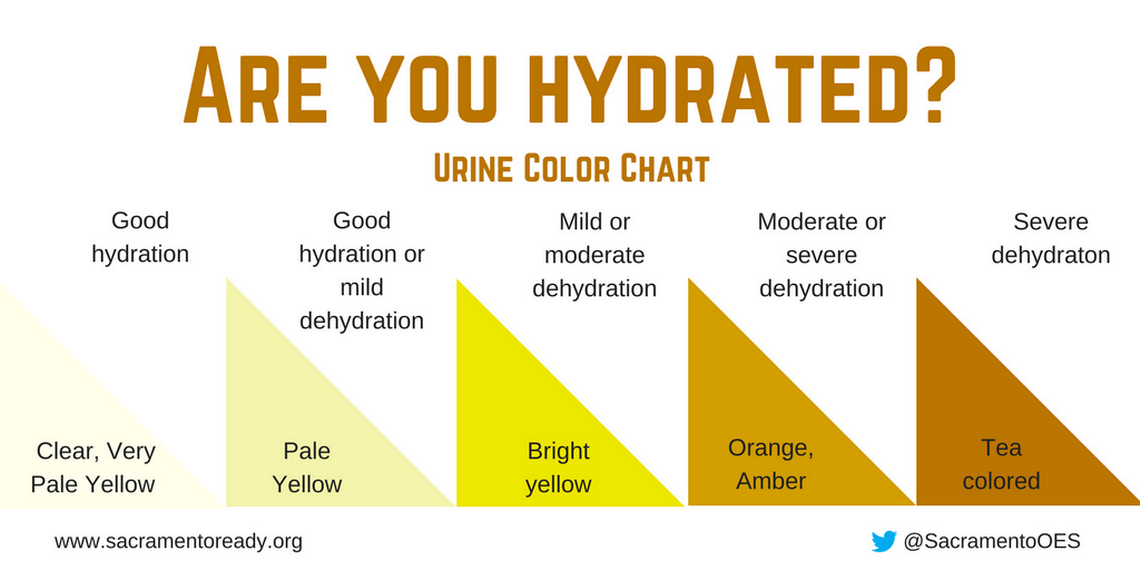Watch out as WA hits triple digits. Some of these heat-related illnesses can be fatal
Washington state has been experiencing high temperatures across the state, as the National Weather Service currently has eight active heat warnings in place.
Every year, between 25 to 113 people are hospitalized for heat-related illness between the months of May and September in Washington state, according to the Washington Department of Health, and about 50% of cases involve those ages 65 years and above.
Heat can also be fatal for children, as when a child’s temperature reaches 107 degrees, death occurs, according to the U.S. Department of Homeland Security.
As finding ways to keep yourself and your home cool during this time can be difficult, it can also be life-saving as heat-related illnesses can be serious in hot weather.
What are heat-related illnesses?
Heat-related illnesses or medical conditions are caused by the body’s inability to cool down, and if left unchecked could lead to death, according to the University of Washington Pacific Northwest Agricultural Safety and Health Center.
Heat illness can also lead to injuries from dizziness or tiredness.
Heat-related illnesses include heat stroke, heat exhaustion, rhabdomyolysis, heat syncope, heat cramps and heat rash, according to the Centers for Disease Control and Prevention:

What is heat stroke?
Heat stroke is the most dangerous heat-related illness where the body cannot cool down, and can reach a temperature of 106 degrees or higher within 10 to 15 minutes. Heat stroke can be fatal or cause permanent disabilities without emergency treatment.
Symptoms of heat stroke can include loss of consciousness, seizures, high body temperature, confusion, slurred speech, hot skin and profuse sweating.
If someone is experiencing heat stroke the CDC advises you to:
▪ Call 911 for medical care.
▪ Move to a shaded, cool area.
▪ Remove outer clothing.
▪ Try to cool the person quickly with an ice bath, cold water, placing wet cloths on the skin, and circulating the air around them.
What is heat exhaustion?
Heat exhaustion is the body’s response to extreme loss of water and salt, usually from excessive sweating, according to the CDC, and usually affects the elderly, people with high blood pressure or those working in a hot environment.
Symptoms of heat exhaustion include dizziness, headache, nausea, weakness, thirst, decreased urine output, elevated body temperature, irritability and heavy sweating.
If someone is experiencing heat exhaustion, the CDC advises you to:
▪ Take them to a clinic or emergency room, and call 911 if medical care is unavailable.
▪ Give the individual cool water to drink and move them to a cool area.
▪ Remove unnecessary clothing such as shoes and socks.
▪ Use cold compresses to cool their body or wash their head, face and neck with cool water.
What is Rhabdomyolysis?
Rhabdomyolysis is a heat-related medical condition that causes the rapid breakdown, rupture and death of a muscle, according to the CDC. When the muscle tissue dies, proteins and electrolytes go into the bloodstream and can cause seizures, irregular heart rhythms and damage to the kidneys.
Symptoms of rhabdomyolysis can include weakness, muscle cramps and pain, exercise intolerance and abnormal dark, tea or cola-colored urine.
If someone is experiencing rhabdomyolysis, the CDC advises you to:
▪ Drink more water and liquids.
▪ Stop physical activity.
▪ Seek immediate medical care, and be checked for rhabdomyolysis.

What is heat Syncope?
Heat Syncope is a fainting or dizzy episode that typically occurs because of dehydration or adjusting to a new climate. Heat syncope can also occur by standing up suddenly after lying down or sitting, or from standing up for too long.
Symptoms of heat syncope include fainting, lightheadedness and dizziness.
If you are experiencing heat syncope, the CDC advises you to:
▪ Sit or lie down in a cool spot.
▪ Slowly drink cold water, a sports drink or clear juice.
What are heat cramps?
Heat cramps typically affect those who sweat excessively during strenuous activity, causing the body to be depleted of needed salt and moisture and causing painful cramps from the low salt levels.
Symptoms include pain, muscle cramps or spasms of the arms, legs or abdomen.
If you are experiencing heat cramps, the CDC recommends you:
▪ Drink water and have a snack that replaces carbohydrates and electrolytes every 15 to 20 minutes.
▪ Avoid salt tablets.
▪ Get medical help if your cramps continue after 1 hour, have heart problems, are on a low sodium diet.
What is a heat rash?
Heat rash is defined by the CDC as skin irritation from sweating during hot and humid weather.
Symptoms of heat rash can include red clusters of small blisters or pimples that usually appear on your neck, elbow creases, groin, upper chest or under breasts.
If you are experiencing heat rash, the CDC recommends you to:
▪ Move to a cooler and less humid environment.
▪ Keep the rash dry.
▪ Do not use ointments and creams on the rash, but apply powder to increase comfort in the rash area.
How do you prevent heat-related illnesses?
The CDC urges you to prevent heat-related illnesses by staying cool, staying hydrated, and staying informed.
▪ Stay cool: wear cool clothing, stay indoors in air conditioning, wear sunscreen, avoid hot and heavy meals and pace yourself during exercise and outdoor activities.
▪ Stay hydrated: drink plenty of fluids, avoid sugary and alcoholic beverages and replace salt and minerals in your diet that your body loses when you sweat.
▪ Stay informed: know the signs of heat-related illnesses, monitor those at high risk, check in with others and check for local updates on cooling shelters and heat alerts.
Who is at the highest risk of heat-related illnesses?
According to The Washington State Department of Health, these groups are at a higher risk of illnesses from being in warm weather:
▪ People 65 years or older
▪ Infants and children 4 years and under
▪ People who are ill
▪ People who are overweight
Certain medications can also increase the risk of heat-related illnesses according to a study published by the National Library of Medicine, such as tricyclic antidepressants, typical or atypical antipsychotics, Diphenhydramine, Hydrochlorothiazide and others.
